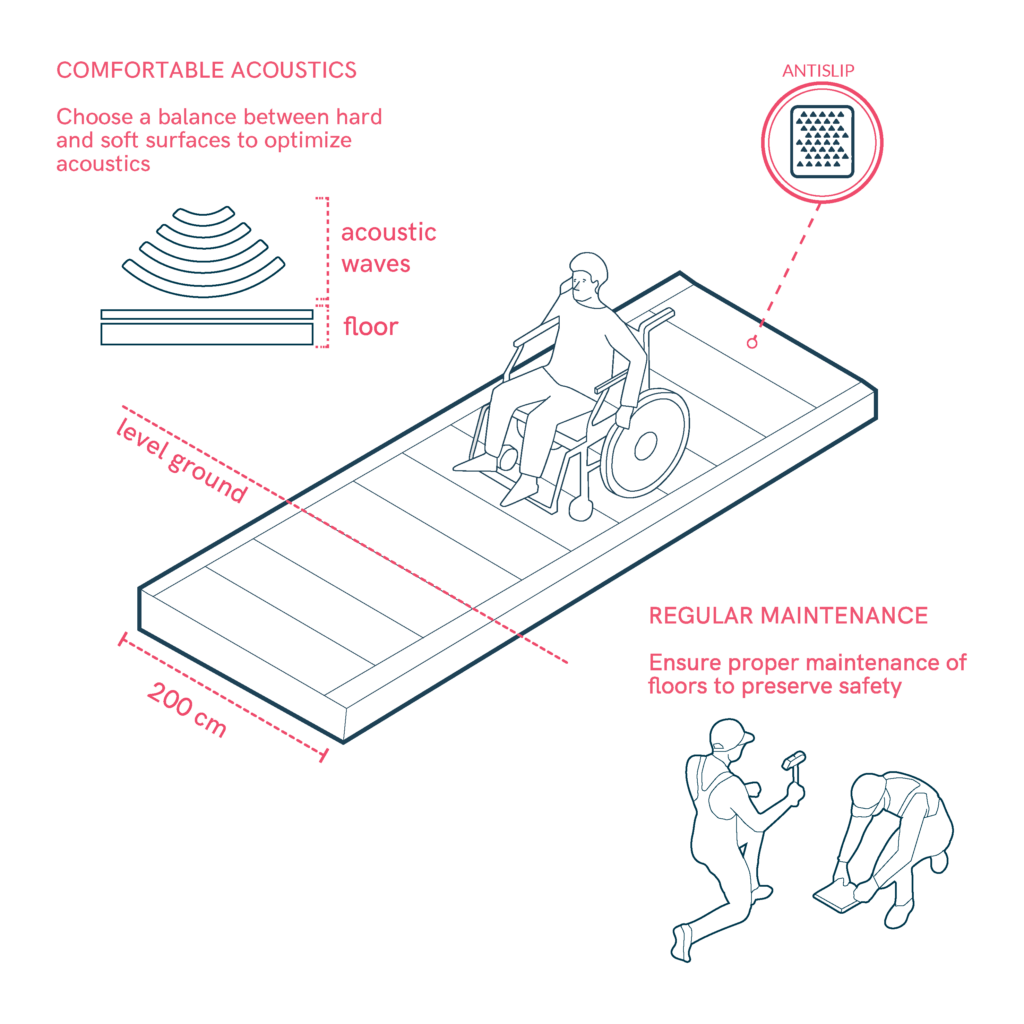Floor Finishes
Floor finishes significantly impact the acoustics and overall environment of a space. By balancing sound absorption and reflection, you create a more comfortable and effective space. Proper transitions between floor materials prevent tripping hazards and improve accessibility. Thoughtful floor design contributes to a safe, acoustically balanced, and inclusive environment.

- Choose a balance between hard and soft surfaces to optimize acoustics and reduce reverberation.
- Ensure changes in floor materials are level to avoid tripping hazards.
- Use contrasting acoustic finishes to define areas within a space and help with wayfinding.
- Avoid large, bold patterns or stripes on floors, as they can be visually confusing and lead to tripping.
- Ensure proper maintenance of floors to preserve safety, especially in areas with high foot traffic.
- Ensure floors are designed to accommodate and support various users, including those with mobility aids.
Sources
- https://accessible-eu-centre.ec.europa.eu/content-corner/digital-library/en-172102021-accessibility-and-usability-built-environment-functional-requirements_en
- https://breeam.es/
- https://www.usgbc.org/leed
- https://evalore.es/servicio/certificaciones-medioambientales/
- https://www.codigotecnico.org/pdf/Documentos/SUA/DccSUA.pdf
- https://universaldesign.ie/built-environment/building-for-everyone/building-for-everyone-full-series
- Carers
- Children
- Cognitive
- Cognitive abilities
- Decolonial perspective
- Digital
- Digital barrier
- Enviroment
- Environmental
- Gender and generations
- Gender perspective
- Hearing impairment
- Low-education
- Low-income
- Older people
- Other
- Physical abilities and features
- Sensory and Physical
- Socioeconomic
- Visual impairment